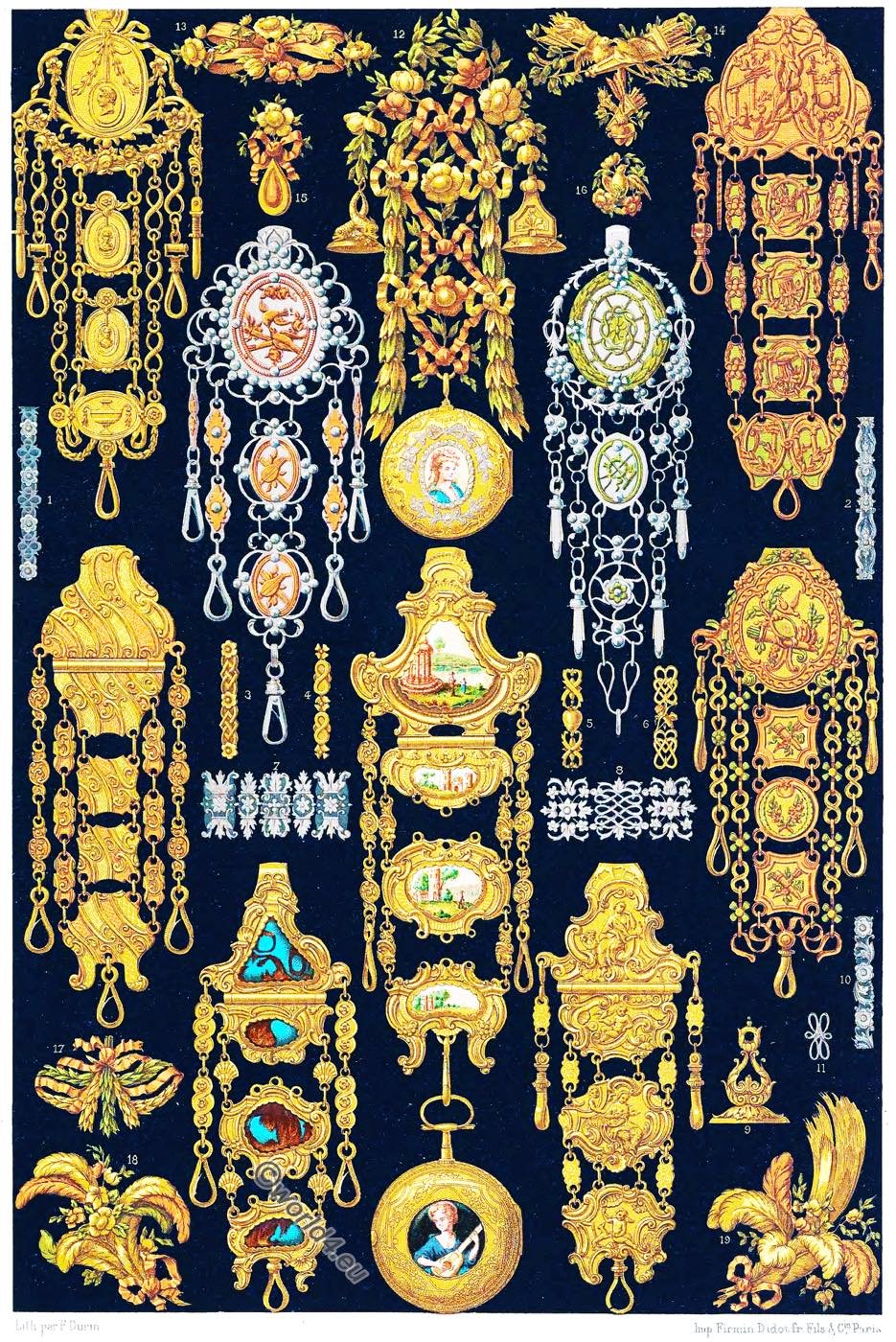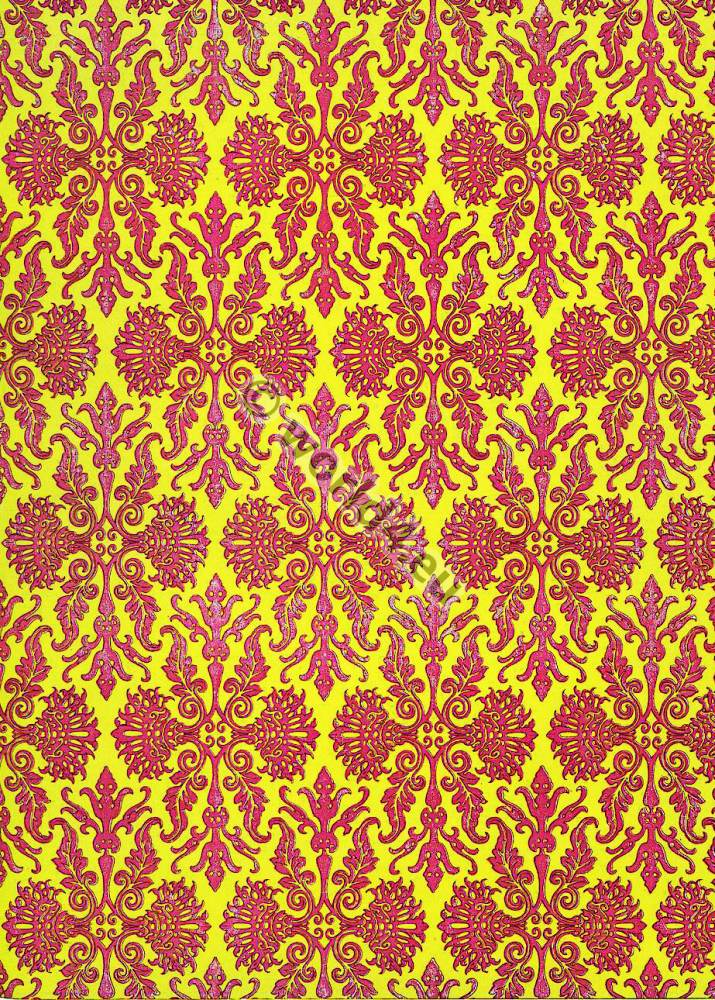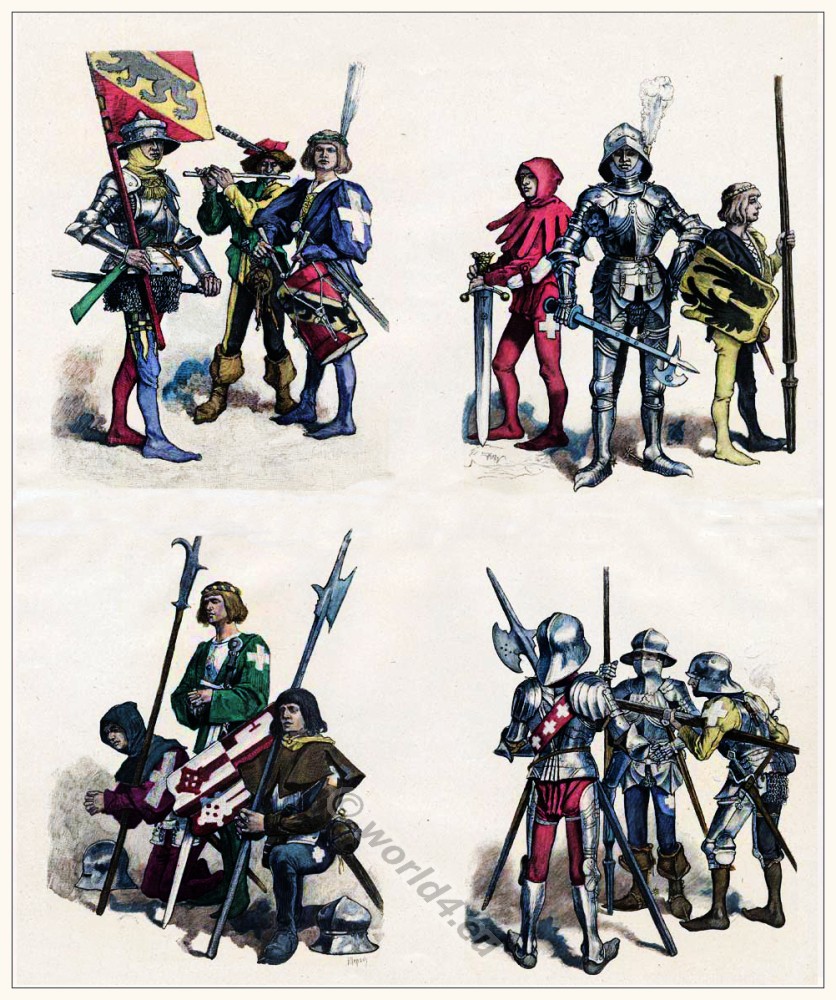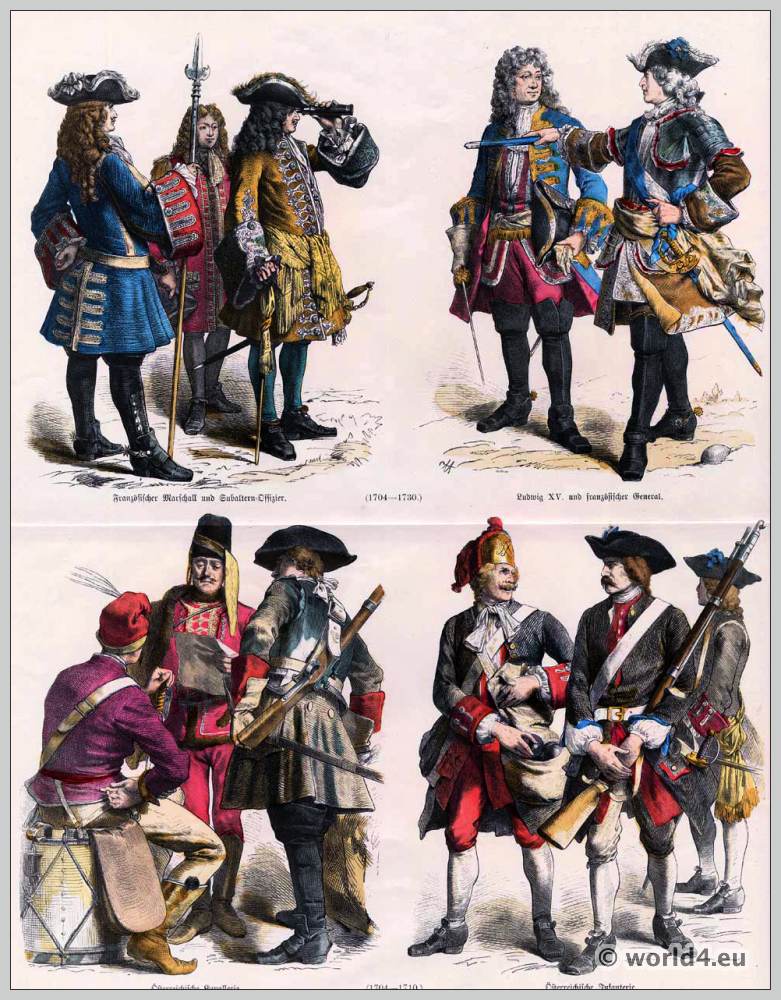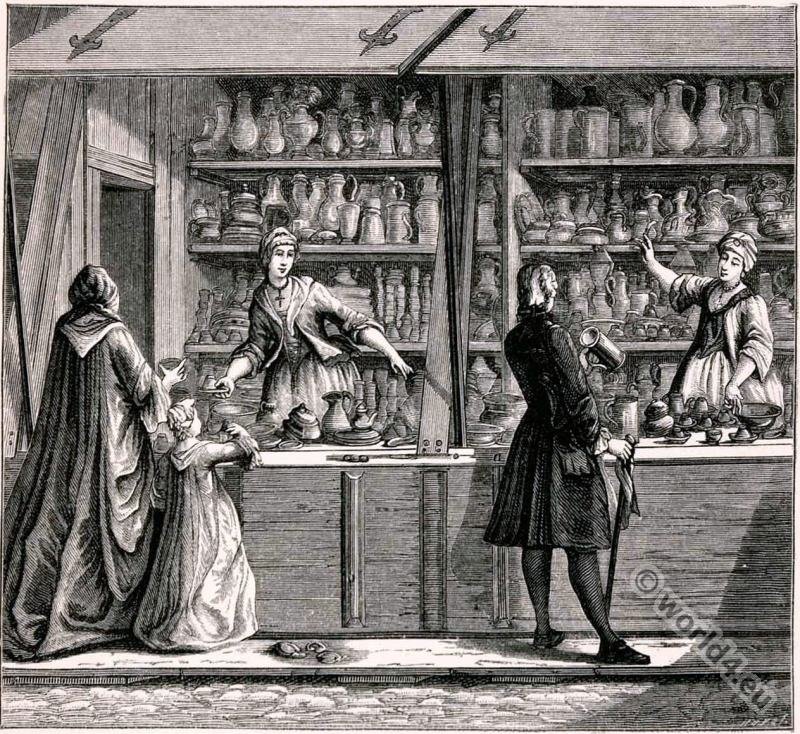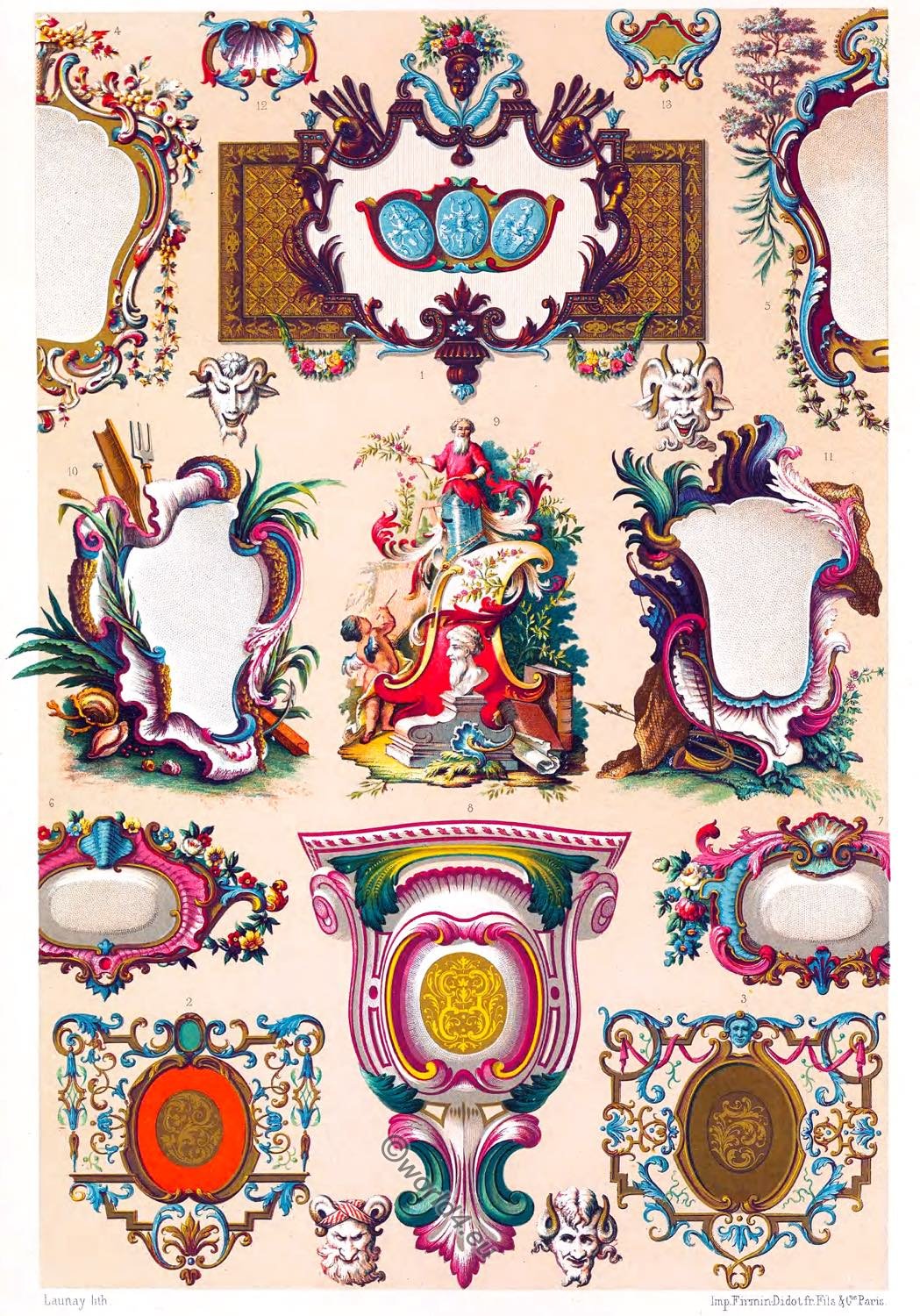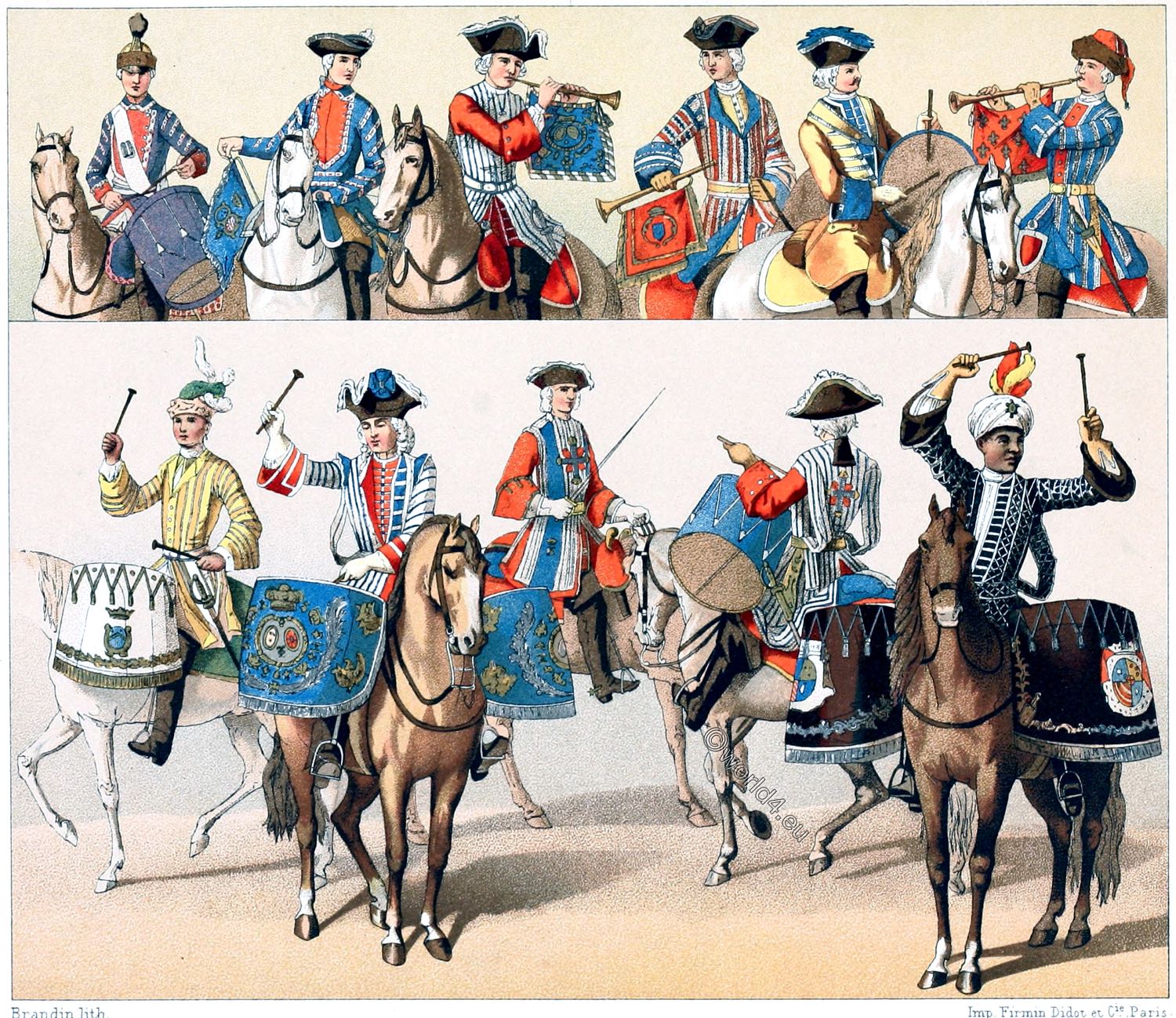
10, 11, 1, 5, 6, 7,
8, 4, 3, 2, 9,
FRANCE. XVIII CENTURY. MILITARY UNIFORMS. CAVALRY MUSIC.
Until 1772 the Cavalry Music Corps did not wear the uniform of the unit to which they belonged. The colour of their overcoats or camisoles usually matched the livery of their colonel. The main part of the fantasy was in dressing up the timpanists. Under Louis XIV, the custom of choosing coloured people for this service had arisen, and it was maintained long into the 18th century.
The decrees of 1772 stipulated that everyone had to wear the royal livery with the blue frock of the king, called à la Polonaise. The dress was trimmed with white cords and stripes. In addition, the lapels and collars retained the special colours of the different troop bodies. A decree of 1731 had established a trumpet school in the Invalidenhotel; the teachers were taken from the ranks of the invalids.
The colour of the musicians’ horses did not need to be uniform, except in the four companies of the Kings Guard, where the coat colours of the musicians’ horses had to be isabelle, although in the four companies themselves, each of which had its own uniform, the Scottish one or that of Noailles, that of Villeroy, Charôst and Harcourt, the choice of the horses was not subject to any restriction or uniformity of colour. It was different with the musketeers of the Kings Guard, who were called grey or black musketeers according to the colour of their horses.
The cavalry regiments had no timpanists. From 1724 to 1734, the Dragoon Corps consisted of fifteen regiments in two squadrons, each with 12 companies. The company was joined by a drummer and a hoboist. The Regiment of Rochepierre was the only one to carry drums, it had conquered them one day while taking an enemy camp by surprise, and was granted the privilege of keeping them.
The timpani mallets of the regular cavalry companies were abolished by the Count of Saint-Germain in 1776. Even the Regiment Colonel-General, the first of the French cavalry, which existed since 1635, had to put up with this measure.
- Nos. 1, 2, 3 – A trumpeter, a drummer and a non-commissioned officer of the Musketeers of the Royal Guard in 1724; these Musketeers wore at that time the same uniform and the same decorations on their upper dresses as they did towards the end of the reign of Louis XIV; only the non-commissioned officer has the regular uniform of the troop section; the musicians wear a topcoat of blue-striped silver brocade.
- No. 4. -The King’s Guard’s timpanist. His skirt, similar to that of the trumpeter, is also made of blue-striped silver brocade. The isabelline coloured horse complies with the regulations.
- No. 5 – Trumpeter of the French Gendarmerie, Company of Chevauxlegers of Orleans. The king was the captain of the first four companies, the king’s companies, the others were companies of princes and bore their names on the saddles of their horses. The bunting on the trumpet bears their coat of arms. The drummer of these companies had the same uniform.
- Nos. 6, 7. – Dragoons. No. 6 is a drummer from the Beauffremont, No. 7 is a trumpeter from the Orleans. The mounted dragoons wore alternately hats or caps; only the Orleans Regiment, officers and soldiers, always wore fur-trimmed caps.
- No. 8 – Timpanist from the Regiment de Villeroy.
- No. 9 – Timpanist from the Regiment Colonel-General. This regiment consisted of twelve companies with black horses, which formed two squadrons.
- No. 10 – Mounted tambour of the Dauphin’s dragoons. These drummers were replaced by trumpeters in 1776.
- No. 11 – Trumpeters of the Regiment Royal Pologne with the colour of the king after the Ordinance of 1772.
(After the works of de Noirmont and Alfred de Marbot on the military costumes of France.
Source: History of the costume in chronological development by Auguste Racinet. Edited by Adolf Rosenberg. Berlin 1888.
Related
Discover more from World4 Costume Culture History
Subscribe to get the latest posts sent to your email.

